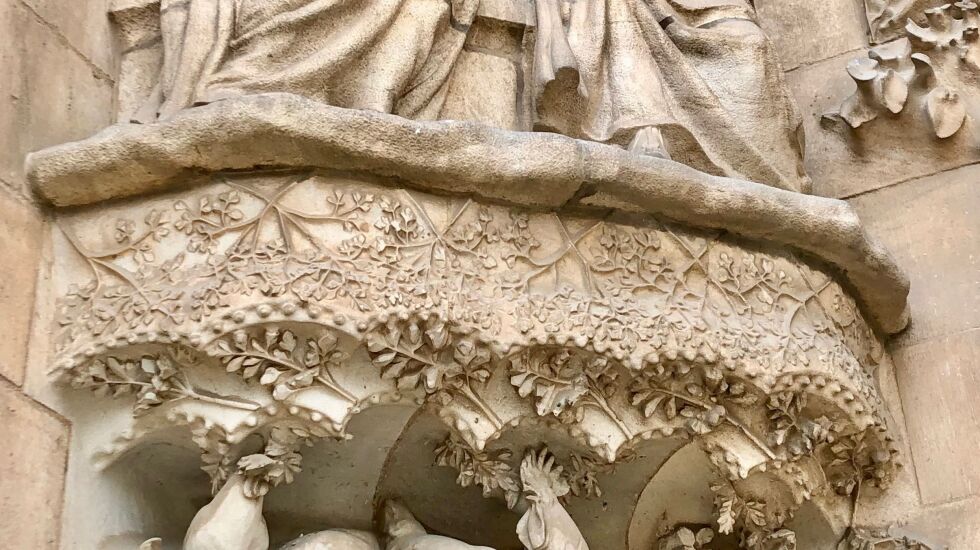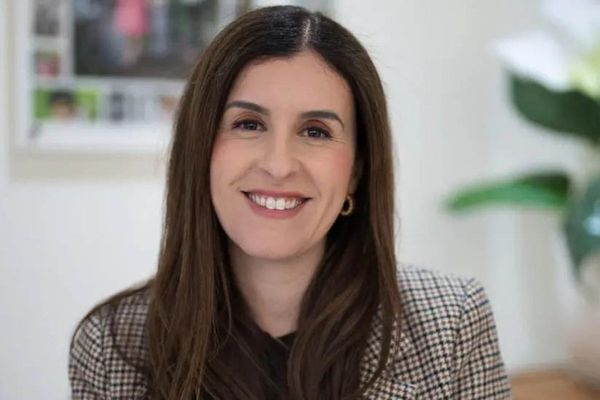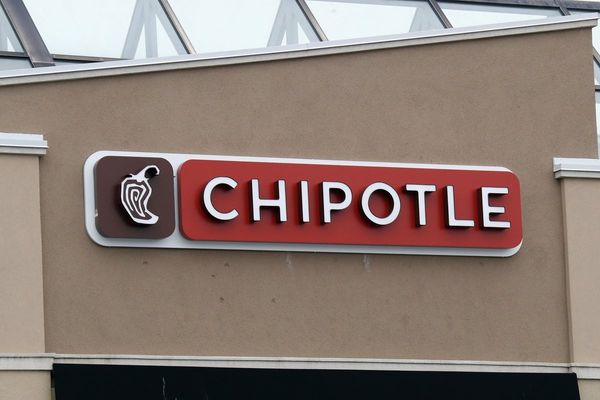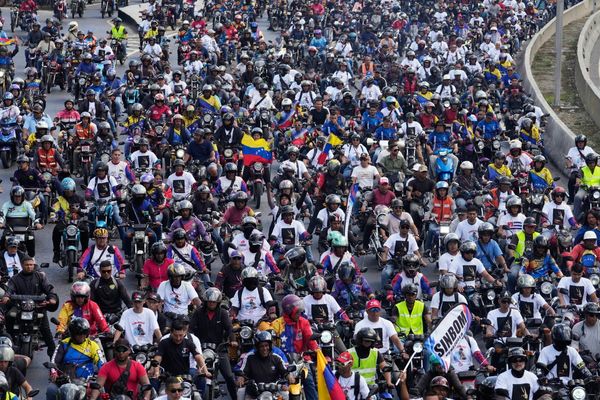
Christmas is Sunday, but I have an early present for you. Maybe something that can warm this frigid holiday weekend a little.
Back in October, my wife and I visited Barcelona — it was supposed to be a 30th anniversary gift to ourselves, but COVID. But after a couple of years, we realized the pandemic is never going away, so we steeled ourselves and flew overseas.
I was vaguely aware that Barcelona is a city in Spain, important during the Spanish Civil War, having read George Orwell’s “Homage to Catalonia.” That’s about it. My wife stepped up, as she always does, and picked what we’d do: at night, eat magnificent tapas dinners at crowded cafes; during the day, visit sites designed by the city’s star architect, Antoni Gaudi.
We picnicked at Park Güell, the rambling high-end housing development turned pleasure compound. We took a night tour of La Pedrera, the curvy apartment building Gaudi designed and lived in, where from the roof we first glimpsed that capstone of our visit, the Basilica de la Sagrada Família, Gaudi’s unfinished masterpiece, an enormous cathedral begun in 1882 and set to be completed in 2026, maybe.
Trying to describe Sagrada Família in words and pictures is something of a fool’s errand. It can’t be conveyed. But given this is Christmas, a season of wonder, with the Three Magi setting out to witness a birth in a manger somewhere in Bethlehem, this seems a time for boldly venturing forth. Were you to go, you’d exit the subway station and first see this mountainous mass — it looks almost organic, a series of pointed conical towers wrapped in protective netting, rising from a mound of mud, with construction cranes jutting out at odd angles.
“Looking for all the world like a cluster of gigantic stone termites’ nests, a colossal vegetable patch,” wrote architectural critic Jonathan Glancey. “A gingerbread house baked by the wickedest witch of all or perhaps a petrified forest.”

Then you get closer, details emerge, once carved by stonemasons, now by computer-guided milling machines. The towers are capped with colorful bunches of fruit. What looks almost like a muddy hillside comes into focus, an explosion of leaves and people and animals — scenes from the life of Christ, mingled with chickens, goats, tortoises, birds. The nativity scene above one doorway made me think this could be a Christmas story, a reminder of the wide range of responses to faith, celebration as well as oppression.
This past year — as in most years — so much of politics is driven by people expressing religion in one way or another, often by forcing others to do as they do. Women being barred from schools in Afghanistan and from abortion clinics in the United States. Various groups being harassed because of who they are. That’s one way to manifest faith. Sagrada Familia is another, one that, to me, while not forgiving any excess, at least points to a better way. A world where we can all express our beliefs. Even this.
The first question puzzling me was: How did this happen? How did the church ever approve this phantasmagoria? Or the city of Barcelona, for that matter? I’ve been to enough zoning meetings to know that no way does a 30-year-old architect spread plans of this hallucinogenic vision in 1880 before some Catalonian civic board and get approval.
Which is not what happened. Luck was involved. Construction began in 1882 under guidance of a different architect, Francisco de Paula del Villar, who envisioned a traditional gothic revival church. But he quit the next year, allowing Gaudi to take over and completely redo the project in his own naturalistic, art nouveau vision. Though in places it seems as if you can see outlines of Villar’s ordinary cathedral, peeking out from Gaudi’s carnival in stone.

Perceptions of religion not only vary, they change. Nearby is the Barcelona Cathedral, consecrated in 1058. Also enormous and magnificent. But very different from the creation of Gaudi, a pious man whose faith nevertheless was alive with birds and frogs and chickens. His Christianity not only animates man, but nature, and is in turn inspired by it.
Gaudi worked on the basilica for 44 years, focusing on it exclusively for the last dozen. He died in 1926 — hit by a streetcar — and the project almost was scuttled by the Spanish Civil War. In 1936 anarchists broke in, set fire to the crypt, and trashed Gaudi’s studio, destroying his drawings and models, which had to be laboriously pieced back together before construction could resume in the 1950s.
I’m a fan of Orwell, but the tubercular Brit missed the point of Sagrada Família entirely, calling it “one of the most hideous buildings in the world” and rooting for its destruction. (He’s not alone. Go on Yelp, and you have no trouble finding baffled one-star reviews. “A travesty of religion,” writes a Californian. “Waste of time and money. ... pretty boring,” adds a North Carolinian. “Was visiting Spain for a few days and came to see this well-known landmark, only to find out that it is not even finished,” complains a tourist from Delaware, who also didn’t like that there were all those cranes ruining his photos. It reminded me of those giving one-star reviews to the Grand Canyon.)

The Sagrada Família is supposed to be completed in 2026, in time for the centennial of the death of Gaudi, who famously retorted to criticisms of the slow pace of construction: “My client is in no hurry.”
COVID tossed a wrench into that, but it is complete enough to hold regular services, and let tourists stream through. Inside is a dizzying space, far simpler, almost devoid of statuary, with soaring fluted columns interrupted by oval lights that give the interior a futuristic feel — Gaudi wants you to feel like you are in a forest.
We went up the Nativity Tower to the roof and got a closeup view of the bunches of fruit, white statuary doves and giant carved seashells.
You could spend an hour just studying the great bronze doors, covered with ivy, with rushes, with roses. Hiding within the verdure, all manner of bees, bugs, frogs, salamanders, a nest of baby birds and, elsewhere on the door, a mama bird hurrying to feed them.
The short answer to “How did the church permit this?” is, it didn’t. Sagrada Família was constructed with private funds and not consecrated by the church until Pope Benedict XVI visited in 2010. Readers in the construction trades might smile to learn that a city building permit wasn’t issued until 2019. Sometimes it’s easier not to ask permission.
Which seems a worthwhile point to remember at Christmas. You don’t need approval. We are allowed to believe and celebrate in a fashion guided by our own hearts, to embrace our own visions, wild though they be. Let our minds soar. Freedom is a blessing, though granting the same liberty to others that we enjoy ourselves is clearly a challenge for some. Yet we all manage to live together in a world of wild bounty and disorder, and the only way it works is for us to try to love and respect one another, difficult though that can be. You probably will never get to Barcelona and visit Sagrada Família. But at least now you know it’s there, which is more than I could say in September. Merry Christmas.








